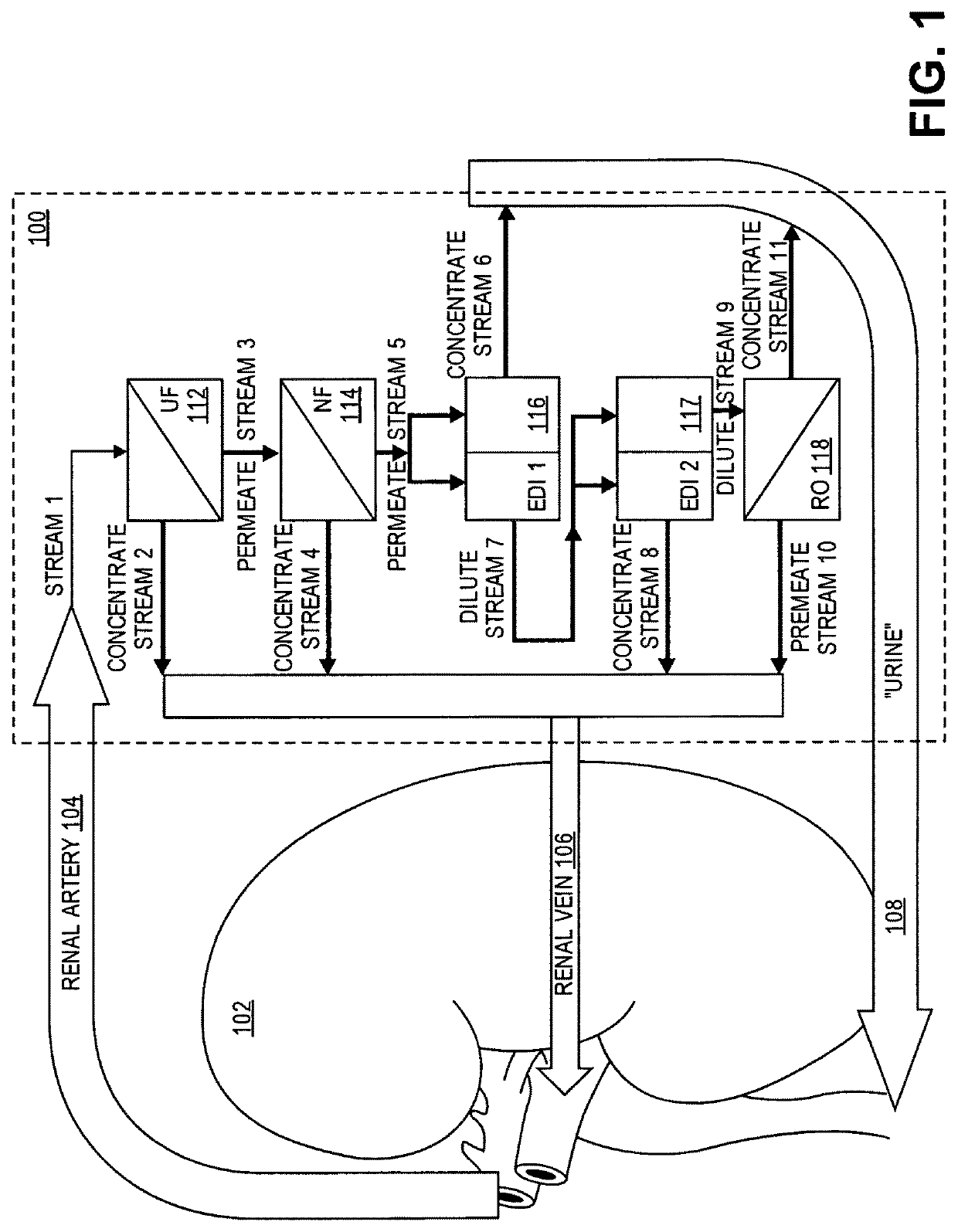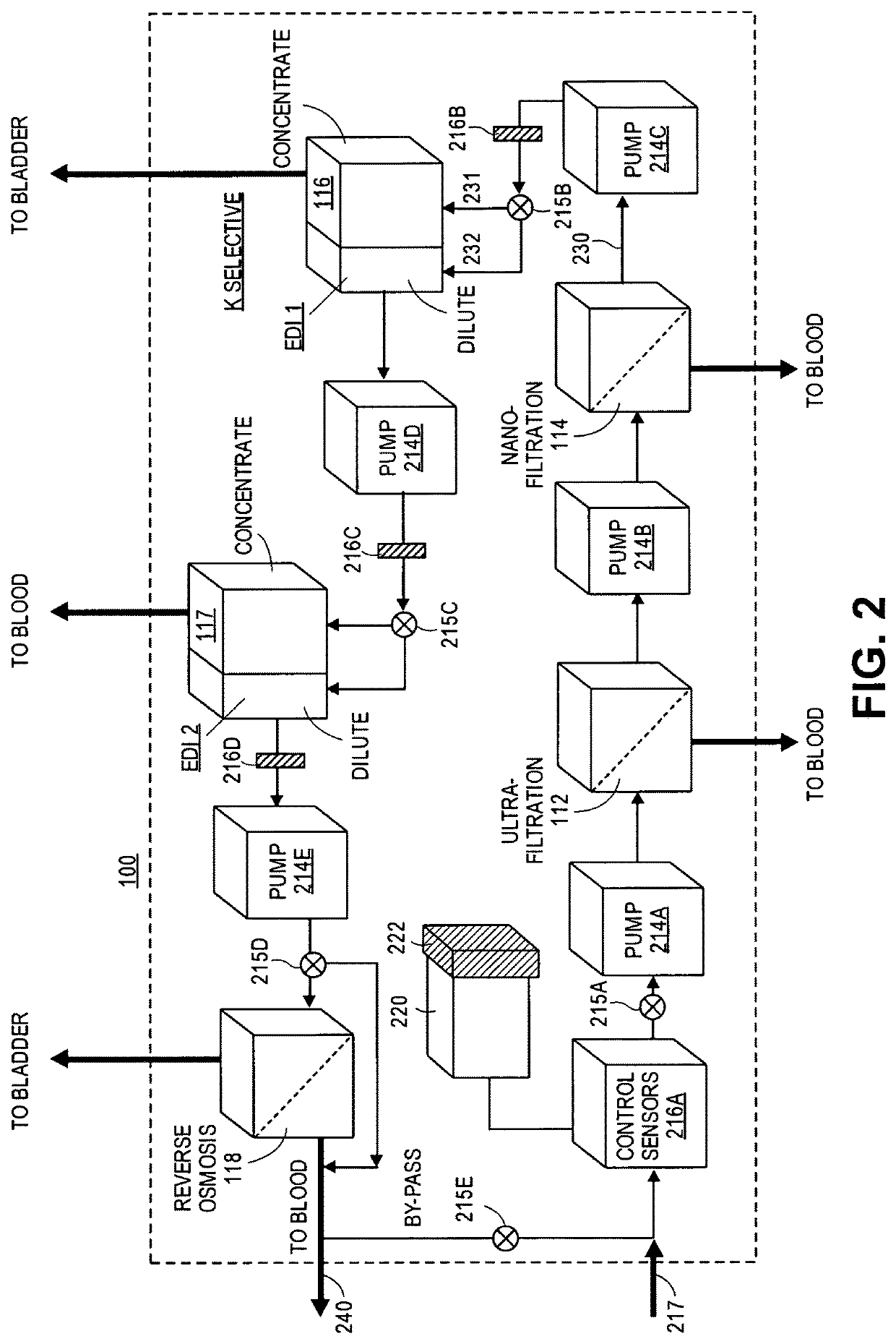Dialysate free artificial kidney device
a technology of artificial kidneys and dialysis, which is applied in the field of devices for the treatment of blood, can solve the problems of increasing the possibility of blood infection, increasing the risk of peritonitis, and a thousand patients on the waiting list, so as to maintain the chemistry of the blood relatively constant, the concentration of these substances in the bloodstream is relatively constant, and the effect of increasing the level of control
- Summary
- Abstract
- Description
- Claims
- Application Information
AI Technical Summary
Benefits of technology
Problems solved by technology
Method used
Image
Examples
Embodiment Construction
[0033]With reference to FIG. 1, the overall device 100 is shown within the dotted lines, the device comprising the following: (1) ultrafiltration (UF) unit 112, (2) nanofiltration (NF) unit 114, (3) electrodeionization (EDI 1 and EDI 2) units 116, and 117, and (4) reverse osmosis (RO) unit 118.
[0034]The purpose of ultrafiltration unit 112 is to separate out from an incoming blood stream (in the illustrated embodiment from renal artery 104 of kidney 102), red blood cells (RBCs), white blood cells (WBCs), proteins, and any other high molecular weight components for return to the blood stream via a fluid conduit to a vein, in the illustrated embodiment renal vein 106. The separation of these large components first from the smaller neutral (glucose, urea) and ionic components (sodium, potassium, etc.) of the blood also aids in the prevention of fouling in the other, downstream separation units.
[0035]Ultrafiltration itself is a well-understood membrane technology that uses pressure to fo...
PUM
| Property | Measurement | Unit |
|---|---|---|
| flow rate | aaaaa | aaaaa |
| pressures | aaaaa | aaaaa |
| pressure | aaaaa | aaaaa |
Abstract
Description
Claims
Application Information
 Login to View More
Login to View More - R&D
- Intellectual Property
- Life Sciences
- Materials
- Tech Scout
- Unparalleled Data Quality
- Higher Quality Content
- 60% Fewer Hallucinations
Browse by: Latest US Patents, China's latest patents, Technical Efficacy Thesaurus, Application Domain, Technology Topic, Popular Technical Reports.
© 2025 PatSnap. All rights reserved.Legal|Privacy policy|Modern Slavery Act Transparency Statement|Sitemap|About US| Contact US: help@patsnap.com



